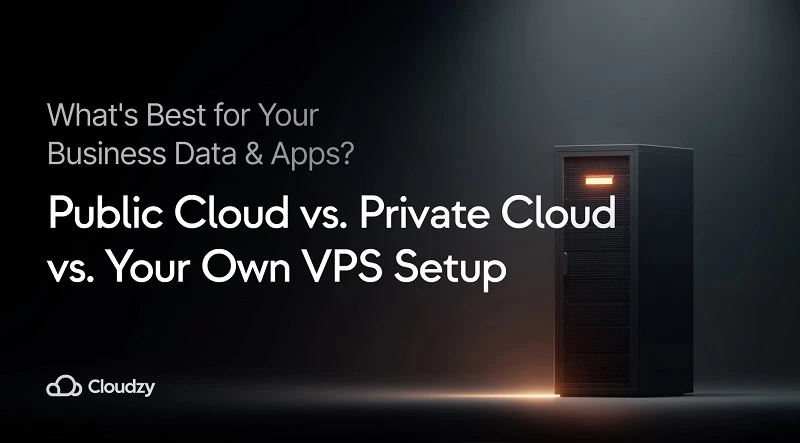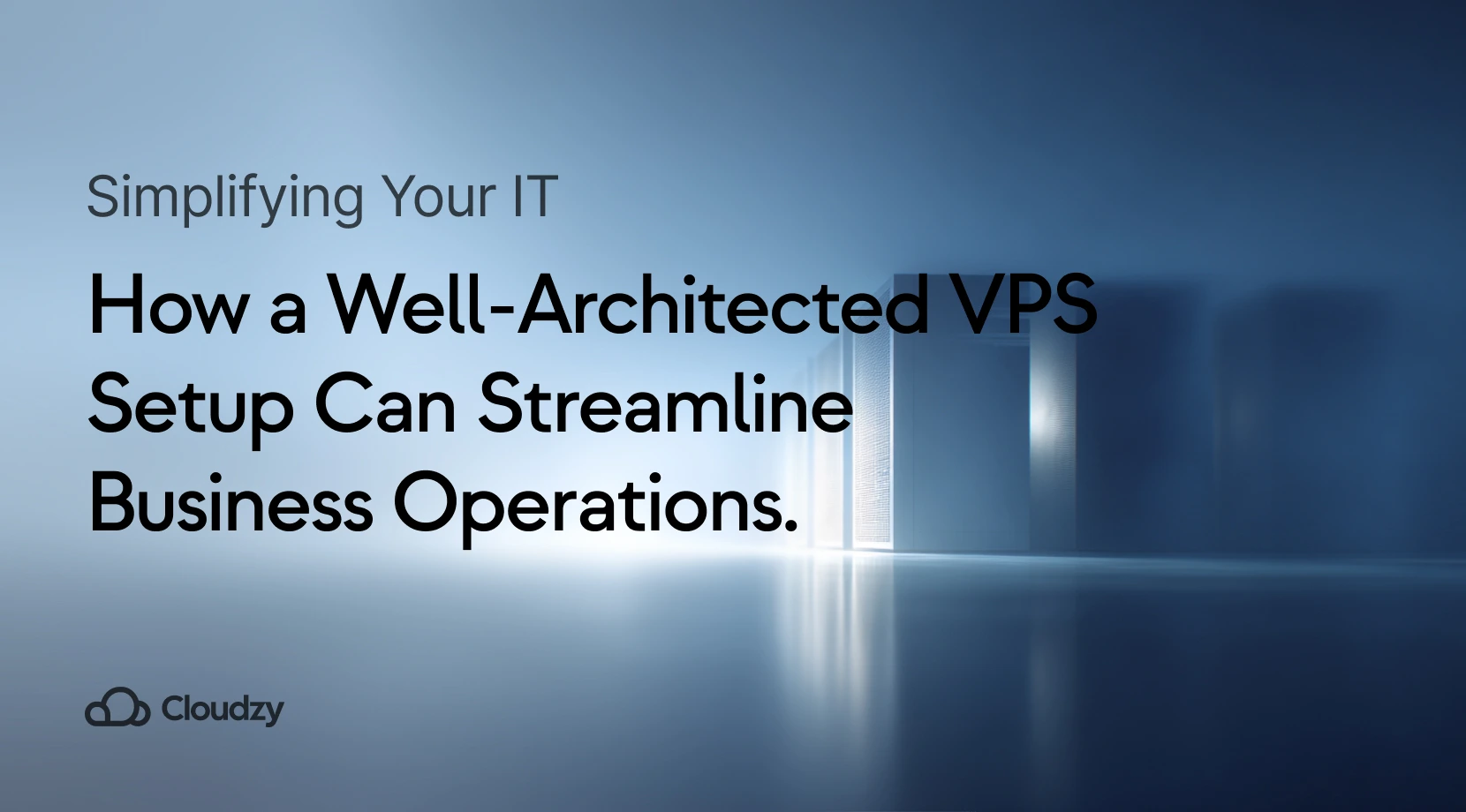Public vs. private VPS comparison for business decisions can feel like chess at speed: the board is the same, but each move carries different risks, costs, and performance limits. As a former sysadmin turned consultant, I have spent years helping SMB owners weigh public cloud offers against private deployments and a home‑grown VPS fleet. Below, I unpack the strengths and drawbacks of each model so you can pick an environment that matches both your workload ambitions and your appetite for responsibility.
Too Many “Cloud” Choices? Let’s Simplify for Your Business

When I talk to founders about choosing cloud for SMB, the first comment I hear is, “Do we really need another acronym?” The market responds with three: IaaS, PaaS, and SaaS—plus public, private, and VPS. Rather than drowning in labels, start with the day‑to‑day tasks that drive revenue. Do you need rapid auto‑scaling to handle flash sales? Are compliance audits looming? Is vendor lock‑in a deal‑breaker? Mapping these answers to a public vs. private VPS comparison for business trims the noise.
Key decision factors worth jotting down:
- Workload sensitivity (customer records, telemetry, intellectual property)
- Elasticity expectations (daily spikes, seasonal peaks)
- cost security control cloud VPS trade‑offs over a three‑year horizon
- In‑house talent for patching, monitoring, and incident response
- Appetite for hybrid solutions that mix on‑prem and cloud APIs
By grounding the conversation in the real world, we avoid the shiny‑object syndrome that often derails infrastructure projects.
Public Cloud: What It Offers Businesses
A public cloud provides pooled compute, network, and storage sold by the minute. For many teams, it feels like magic: swipe a card, launch a cluster, and watch traffic flow. In our public vs. private VPS comparison for business, the public option delivers speed but introduces trade‑offs.
Snapshot of public cloud upsides
- Global edge locations and managed PaaS services
- Built‑in redundancy without buying extra hardware
- Rapid proofs of concept—ideal for VPS or cloud for business applications that must hit the market fast
At Cloudzy, we bring those upsides home with our own public cloud regions. We run NVMe‑backed nodes behind transparent, flat‑rate billing, so your app bursts without surprise overages. Because we own the hardware stack end‑to‑end, we can place your workloads in the jurisdiction you choose and still deliver launch‑in‑minutes simplicity. If instant capacity tops your checklist, our cloud server lineup scales from dev sandbox to production in just a few clicks. The result? A public vs. private VPS comparison for business that spotlights a provider ready to grow alongside you.
Watch‑outs
- Steep learning curve for IAM policies; one mis‑scoped role can be messy
- Egress fees that punish data‑heavy analytics
- Limited influence over physical data residency despite region selection
If you suspect public costs will spike, bookmark a short read on cloud infrastructure security that shows how to harden shared environments without overspending.
After helping clients optimize invoices for over a year, my rule is simple: calculate a three‑year total cost of ownership, then compare it to the next two sections in our public vs. private VPS comparison for business.
Private Cloud: When Maximum Control is Key
Before spinning up stacks, take a moment to read a detailed primer on the private cloud so you can set expectations.
A private cloud—hosted in your rack or by a single‑tenant provider—gives you full control over hardware, hypervisor, and even cabling. In regulated sectors, auditors love that clarity. In a public vs. private VPS comparison for business, auditors often pivot to the encryption workflow.
Benefits that resonate with compliance teams
- Dedicated hardware equals predictable performance
- Custom network zoning for zero‑trust segmentation
- Easier integration with legacy on‑prem assets
Potential headaches
- Higher upfront spending and longer procurement cycles
- The same patch Tuesday headaches you thought Cloud would erase
- Talent retention: system engineers who love KVM are hard to find
Even with those challenges, a private build often beats public bills for workloads that stay busy year‑round. Those cases keep appearing in every public vs. private VPS comparison.
Your VPS Setup: A Powerful, Controlled, and Often Simpler Option
Spinning up your own VPS fleet sits between renting public mega-platforms and buying a private cage. You lease virtual machines—usually on KVM or Xen—from a provider that focuses on raw compute rather than heavy PaaS layers.
Why a VPS still wins mindshare
- Predictable pricing that sidesteps egress gotchas
- Root access for low‑level tuning, ideal for VPS or cloud for business applications that need custom kernels
- Freedom to select the best base image, then snapshot it for clones
Points to verify first
- Service‑level agreements: not all hosts guarantee 99.95 percent uptime
- Backup routines—do you handle snapshots, or does the provider?
- How cost security control cloud VPS shifts if you add dozens of nodes
If you want a managed path, you can always buy cloud server capacity and layer automation on top. That hybrid mindset is appearing more in modern public vs. private VPS comparison for business assessments.
During a public vs. private VPS comparison for business, many founders discover they prefer to SSH into a known address instead of wrestling with a console labyrinth.
Comparing Costs, Security, Ease of Use, and Control
After dozens of whiteboard sessions, I like to summaries the findings in a single table. It keeps everyone honest.
| Factor | Public Cloud | Private Cloud | VPS Setup |
| Typical Billing Model | Pay‑as‑you‑go plus egress | Upfront CapEx, lower OpEx | Monthly flat rate |
| Hands‑on Control | Low—abstracted hypervisor | High—full stack | Medium—root on VMs |
| Security Posture | Shared responsibility | You own every layer | Provider secures hardware, you secure OS |
| Compliance Fit | Good for ISO 27001, trickier for strict data residency | Strong for GDPR, HIPAA | Depends on provider’s certifications |
| Skill Set Needed | Cloud architects, FinOps | Virtualization engineers | Linux admins |
| Vendor Lock‑In Risk | High (proprietary APIs) | Low | Low |
The matrix shows that no single column beats the rest across every metric. That reality underpins every public vs. private VPS comparison for business debate I have with clients.
Quick bullet checklist before you decide
- Revisit choosing cloud for SMB priorities every quarter
- Map each application to the table above, not to marketing claims
- Double‑check that each public vs. private VPS comparison for business weighs bandwidth egress correctly
- Weigh how cost security control cloud VPS changes as headcount, traffic, or compliance demands grow
- For hybrid solutions, test latency between services before signing anything
Remember, even a perfect calculator cannot replace a dry run. Spin up a small proof of concept in each environment, then measure real‑world performance.
Which Model Fits Your Business’s Specific Needs for Data & Apps?
Let’s stitch the findings together. If your startup chases unpredictable spikes—think social campaigns—public cloud elasticity may save the day. If you run a medical SaaS, the audit trail of a private build pays dividends. And if you value direct root access without drowning in hardware, a tuned VPS cluster brings balance.
During a recent engagement, a 50‑person e-commerce brand moved checkout APIs to VPS nodes for lower latency, kept analytics in public BigQuery, and placed the payment vault in a private OpenStack pod. That mix hit every item on their wish list: elasticity, strict compliance, and controllable spending.
Whenever we perform a public vs. private VPS comparison for business, I advise clients to:
- Capture three‑year costs, not month‑one quotes
- Treat security as a continuous process, not a checkbox—link your posture to cloud infrastructure security best practices.
- Re‑evaluate contracts yearly, because pricing wars move fast
- Map each VPS or cloud for business applications scenario to your growth targets
- Remember, choosing cloud for SMB is an ongoing exercise as your app stack matures
Finally, do not forget the user experience. Developers enjoy frictionless pipelines, and customers like fast page loads. By pairing those soft metrics with our hard table above, your public vs. private VPS comparison for business ends with facts, not guesses.
Next Steps
If your evaluation tilts toward VPS, consider a trial node or jump straight in and buy VPS capacity bundled with managed backups. For collaboration‑driven teams, a Nextcloud VPS can become the hub for docs, chat, and calendar, keeping data under your domain.
I hope this friendlier dive into the public vs. private VPS comparison for business helps you cut through the jargon. Use this public vs. private VPS comparison for business as a springboard—score your workloads, sidestep common missteps, and shape an environment that matches both your users’ expectations and your budget.



